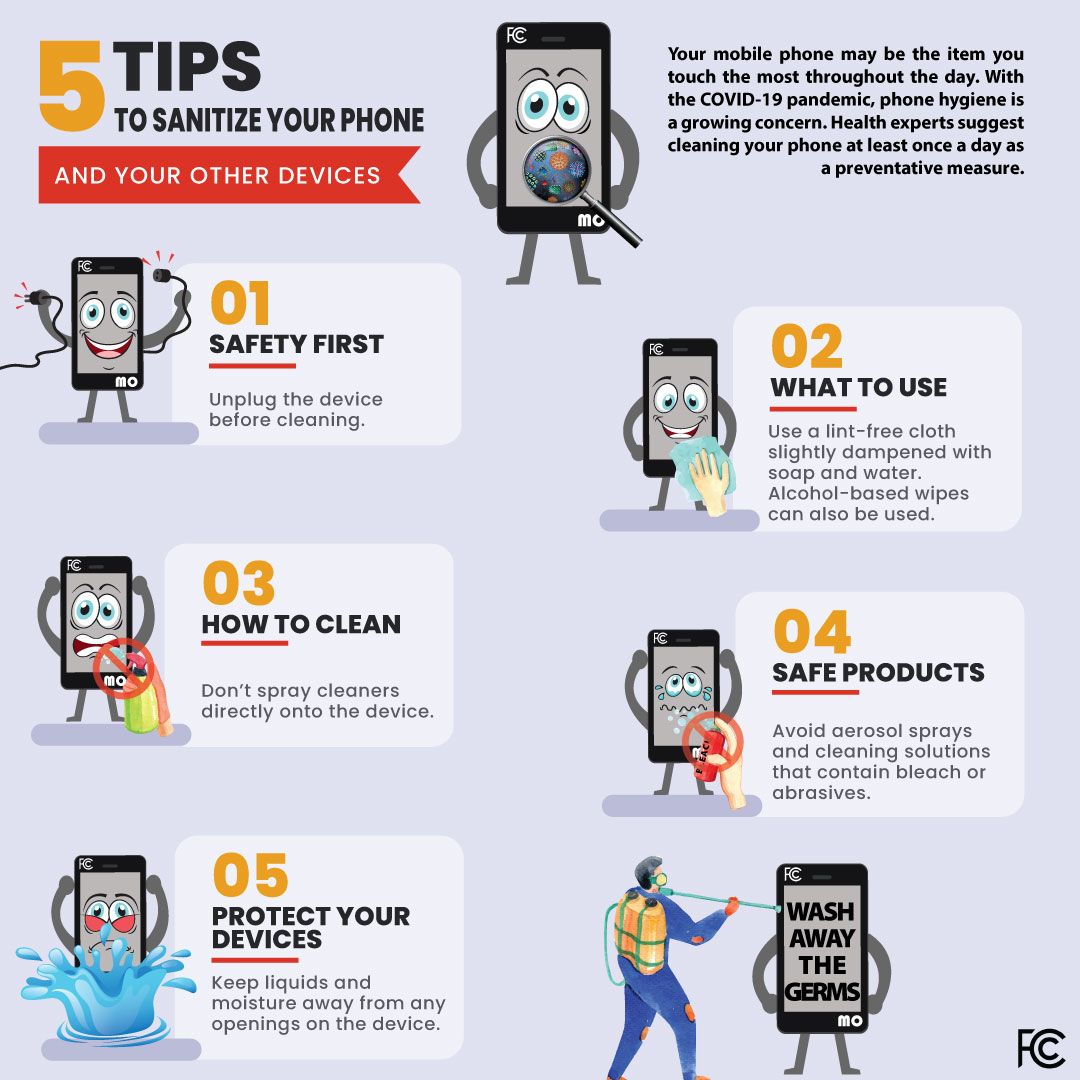Device Hygiene Download Poster: Five Tips to Sanitize Your Phone
Download Poster: Five Tips to Sanitize Your Phone
Many students carry a mobile phone or use a tablet for assignments. Health experts suggest cleaning your device at least once a day. The FCC's consumer guide on how to sanitize your phone and other devices includes helpful recommendations from device manufacturers.
Optimize Your Home Network
If you have a home internet connection, you may find that you have more devices streaming and you're using more data than expected. Check out our guide on how to optimize your home network has tips to evaluate and get the most out of your current setup.
Going back to school can be an exciting time for students, families, and teachers. Each year, more schools are providing students with connected devices and assigning homework that requires spending time online. This is why home internet access is critically important for every student's success.
To help more families afford the cost of a home internet connection and to ensure households have the internet access they need for school, work, healthcare and more, the FCC offers its Lifeline program. The Lifeline program offers a $9.25 monthly benefit on broadband service for eligible households and a $34.25 monthly benefit if you live on qualifying Tribal lands. These benefits may alleviate some financial pressure for certain households if they’re eligible to participate in the Lifeline program.
Find out how to qualify for Lifeline benefits.
Wi-Fi: Safety First
If connecting to public Wi-Fi hotspots, it is important to keep security in mind. Our guide on how to protect yourself online includes a number of tips.
Parents, you may need to help your students set up strong passwords on their devices and download any required apps for school. Check out our consumer guide if it's your kid's first phone. Make sure your kids know they should not respond to callers they don't know or click on links in texts without showing you first. These call-blocking tools and resources may help protect your kids from robocall scams.
Finally, check out our guide about protecting your device, with tips about safeguarding against theft, protecting personal data, and what to do if your child's device is lost or stolen.